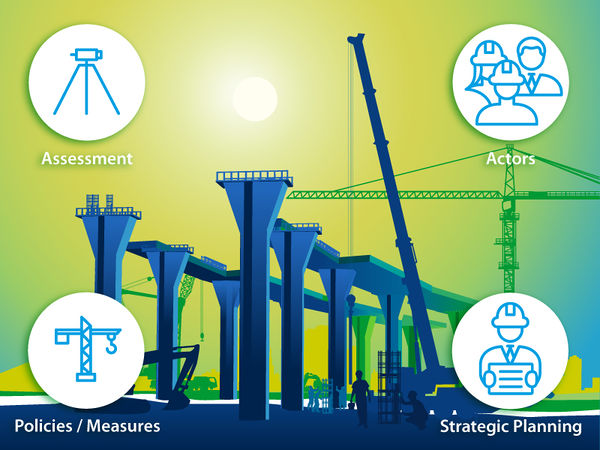Knowledge fuels change - Support energypedia!
For over 10 years, energypedia has been connecting energy experts around the world — helping them share knowledge, learn from each other, and accelerate the global energy transition.
Today, we ask for your support to keep this platform free and accessible to all.
Even a small contribution makes a big difference! If just 10–20% of our 60,000+ monthly visitors donated the equivalent of a cup of coffee — €5 — Energypedia would be fully funded for a whole year.
Is the knowledge you’ve gained through Energypedia this year worth €5 or more?
Your donation keeps the platform running, helps us create new knowledge products, and contributes directly to achieving SDG 7.
Thank you for your support, your donation, big or small, truly matters!
Difference between revisions of "SE4Jobs Toolbox - Co-benefits"
***** (***** | *****) |
***** (***** | *****) |
||
| Line 55: | Line 55: | ||
Providing evidence for these co-benefits can strengthen their legitimacy and boost support or reduce opposition. They should therefore be taken into account from the outset, alongside the main motivations in energy policy for investing in RE and EE. | Providing evidence for these co-benefits can strengthen their legitimacy and boost support or reduce opposition. They should therefore be taken into account from the outset, alongside the main motivations in energy policy for investing in RE and EE. | ||
</div> | </div> | ||
| − | === Why is the | + | === Why is the issue of co-benefits important for the expansion of RE and EE? <span style="line-height: 21px"><span class="mw-customtoggle-title2" style="font-size:small; font-weight: bold; display:inline-block; float:center; color: blue"><span class="mw-customtoggletext">'''[Expand]'''</span></span></span><br/> === |
<div id="mw-customcollapsible-title2" class="mw-collapsible mw-collapsed"> | <div id="mw-customcollapsible-title2" class="mw-collapsible mw-collapsed"> | ||
| − | + | Strategies and policy measures that advance RE and EE compete with other policy goals over (more or less) scarce resources. Quite often, superficial assessments of the various technologies underestimate the benefits of a reduced dependency on fossil fuel energy, all the more so as externalities are generally not taken into account in the energy price. A better awareness of what co-benefits exist, and how they can be ‘harvested’ and distributed, can substantially increase support for RE and EE policies and investments. They are therefore vital for any large-scale and truly sustainable transition towards a new, low-carbon energy mix. | |
</div> | </div> | ||
=== What are key questions for addressing the assessment of co-benefits? <span style="line-height: 21px"><span class="mw-customtoggle-title3" style="font-size:small; font-weight: bold; display:inline-block; float:center; color: blue"><span class="mw-customtoggletext">'''[Expand]'''</span></span></span><br/> === | === What are key questions for addressing the assessment of co-benefits? <span style="line-height: 21px"><span class="mw-customtoggle-title3" style="font-size:small; font-weight: bold; display:inline-block; float:center; color: blue"><span class="mw-customtoggletext">'''[Expand]'''</span></span></span><br/> === | ||
Revision as of 15:02, 17 November 2017
SE4Jobs Toolbox – Laying the foundations for a sustainable development
| Existing Capacities | Co-benefits | Trade-offs |
ToolsPRODUSE EQuIP CADRE Interactive AILEG HELIO ELMA |
What is the issue of co-benefits about? [Expand]
Expanding RE and improving EE can lead to numerous co-benefits, which can (more than) justify the high upfront investments. For example, co-benefits include:
Providing evidence for these co-benefits can strengthen their legitimacy and boost support or reduce opposition. They should therefore be taken into account from the outset, alongside the main motivations in energy policy for investing in RE and EE. Why is the issue of co-benefits important for the expansion of RE and EE? [Expand]
Strategies and policy measures that advance RE and EE compete with other policy goals over (more or less) scarce resources. Quite often, superficial assessments of the various technologies underestimate the benefits of a reduced dependency on fossil fuel energy, all the more so as externalities are generally not taken into account in the energy price. A better awareness of what co-benefits exist, and how they can be ‘harvested’ and distributed, can substantially increase support for RE and EE policies and investments. They are therefore vital for any large-scale and truly sustainable transition towards a new, low-carbon energy mix. What are key questions for addressing the assessment of co-benefits? [Expand]
[Text] How can the assessment of co-benefits be addressed? [Expand]
[Text] Background studies [Expand]
[Text] |
Good Practices
Brazil China India Mexico South Africa Turkey |
Reference
|
This article is part of the RE-ACTIVATE project. RE-ACTIVATE “Promoting Employment through Renewable Energy and Energy Efficiency in the MENA Region” is implemented by the Deutsche Gesellschaft für Internationale Zusammenarbeit (GIZ) GmbH on behalf of the German Ministry for Economic Cooperation and Development (BMZ). |




















